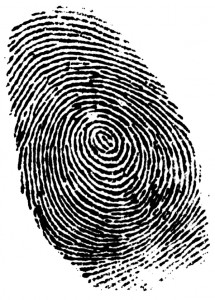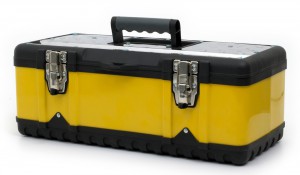 Almost every company has a wireless network in effect to some extent. It´s a part of the modern workplace and keeps computers, printers and other devices talking to each other and working smoothly.
Almost every company has a wireless network in effect to some extent. It´s a part of the modern workplace and keeps computers, printers and other devices talking to each other and working smoothly.
Every wireless network is a potential entry point for determined hackers, though, who can hack your system from a nearby coffee shop, or your own car park. They don´t even need to come in to break in these days. Thanks to long-range aerials you might never even see them coming and the most well-equipped can work from the comfort of their own home.
A Sniffer, But No Dog
 Malicious hackers often come armed with packet sniffers
Malicious hackers often come armed with packet sniffers![]() . That might sound like they´re turning up to the office with a dog in tow, and in a way they are, but don´t go looking for a furry friend. Instead packet sniffers are hardware or high-tech programs that intercept and log network traffic.
. That might sound like they´re turning up to the office with a dog in tow, and in a way they are, but don´t go looking for a furry friend. Instead packet sniffers are hardware or high-tech programs that intercept and log network traffic.
Packet sniffers can be used for perfectly ethical reasons, like testing protocols and diagnosing network issues. Hackers also like to use them, though, and can intercept unencrypted data and take all kinds of information, including passwords and authentication tokens, that renders the whole process of security meaningless. Hackers also capture entire packets to use later in specific types of attacks such as spoofing, where hackers can send out thousands of emails from your system, and man-in-the-middle attacks.
Encryption is Key
 The best way to maintain the integrity of your network is to encrypt every piece of information that is transmitted across it with WPA/WPA2 encryption on your network. This makes the packet sniffer and any number of attacks useless, because even if the hacker has the data he cannot read it. Secure File Transfer protocol and Secure Shell are just two fully secured means of transmitting data.
The best way to maintain the integrity of your network is to encrypt every piece of information that is transmitted across it with WPA/WPA2 encryption on your network. This makes the packet sniffer and any number of attacks useless, because even if the hacker has the data he cannot read it. Secure File Transfer protocol and Secure Shell are just two fully secured means of transmitting data.
This might not always be possible, but if your network is on WEP protection, then it is time to upgrade![]() to WPA at the very least and WPA2 is highly recommended. WEP is just too easy to get around and YouTube is awash with videos showing even casual hackers how to break WEP in minutes. WPA is stronger, but still has some vulnerabilities, while WPA2, with the right length and type of password, is strong enough to survive most brute force attacks and renders packet sniffing useless.
to WPA at the very least and WPA2 is highly recommended. WEP is just too easy to get around and YouTube is awash with videos showing even casual hackers how to break WEP in minutes. WPA is stronger, but still has some vulnerabilities, while WPA2, with the right length and type of password, is strong enough to survive most brute force attacks and renders packet sniffing useless.
Your Favorite Channel
 Packet sniffers can generally capture one channel at a time, unless you´re dealing with seriously sophisticated hackers with multiple wireless interfaces and the ability to capture multiple channels.
Packet sniffers can generally capture one channel at a time, unless you´re dealing with seriously sophisticated hackers with multiple wireless interfaces and the ability to capture multiple channels.
The packet sniffing software, which can be any number of open-source options or kits that can be purchased on the ‘black market’, captures the raw packet of data, which is a conversation between two nodes on the network, and then analyzes it. This is useful for IT engineers working on their own network as they can find out where a problem lies and which node isn´t responding to a network request. Of course they can be used for nefarious purposes too.
Hackers can see the websites you´re visiting, albeit the non-secure ones, and files, passwords and all manner of other data.
Countermeasures
 If you want to check your own network for a packet sniffer then you can use an anti-packet sniffing tool. These detect ´promiscuous´ networks that have been set up for sniffing packets of data and compromising your network´s security. That will only work if the computer in question is in the vicinity at the time, though, and won’t strictly protect you from anything.
If you want to check your own network for a packet sniffer then you can use an anti-packet sniffing tool. These detect ´promiscuous´ networks that have been set up for sniffing packets of data and compromising your network´s security. That will only work if the computer in question is in the vicinity at the time, though, and won’t strictly protect you from anything.
Security is a vital part of any network, but especially a wireless one which can be more easily accessed than a wired. Even if your company only uses a wireless network for visitors, it still needs to be protected to ensure that your visitor data is also safe.
Hacking tools available on the internet are cheap and easy-to-use these days and as a quick look at any news channel will often tell you, network intrusions can happen to even the largest organizations. This means that it pays never to be complacent about network security, especially if you store sensitive customer data such as credit card details.
